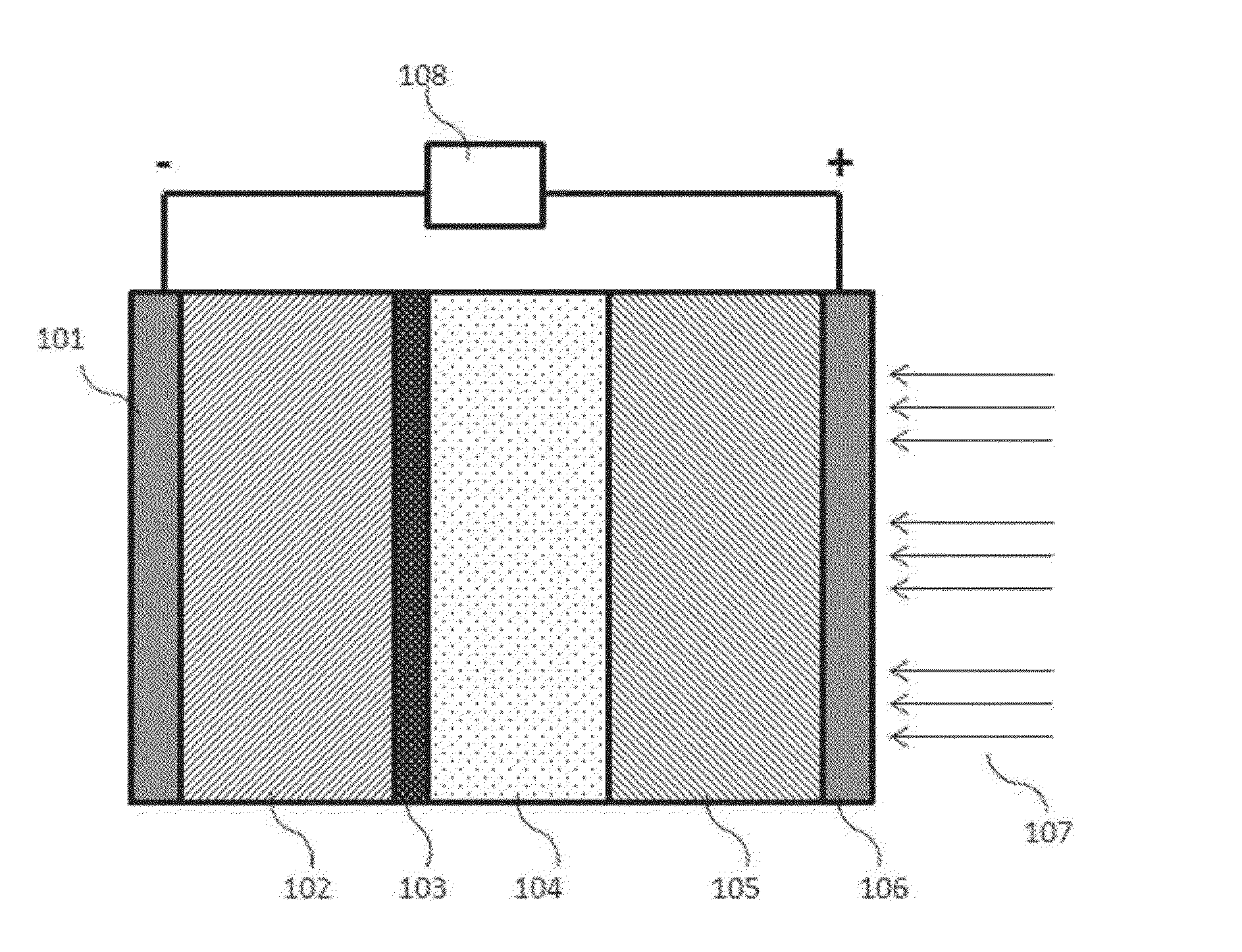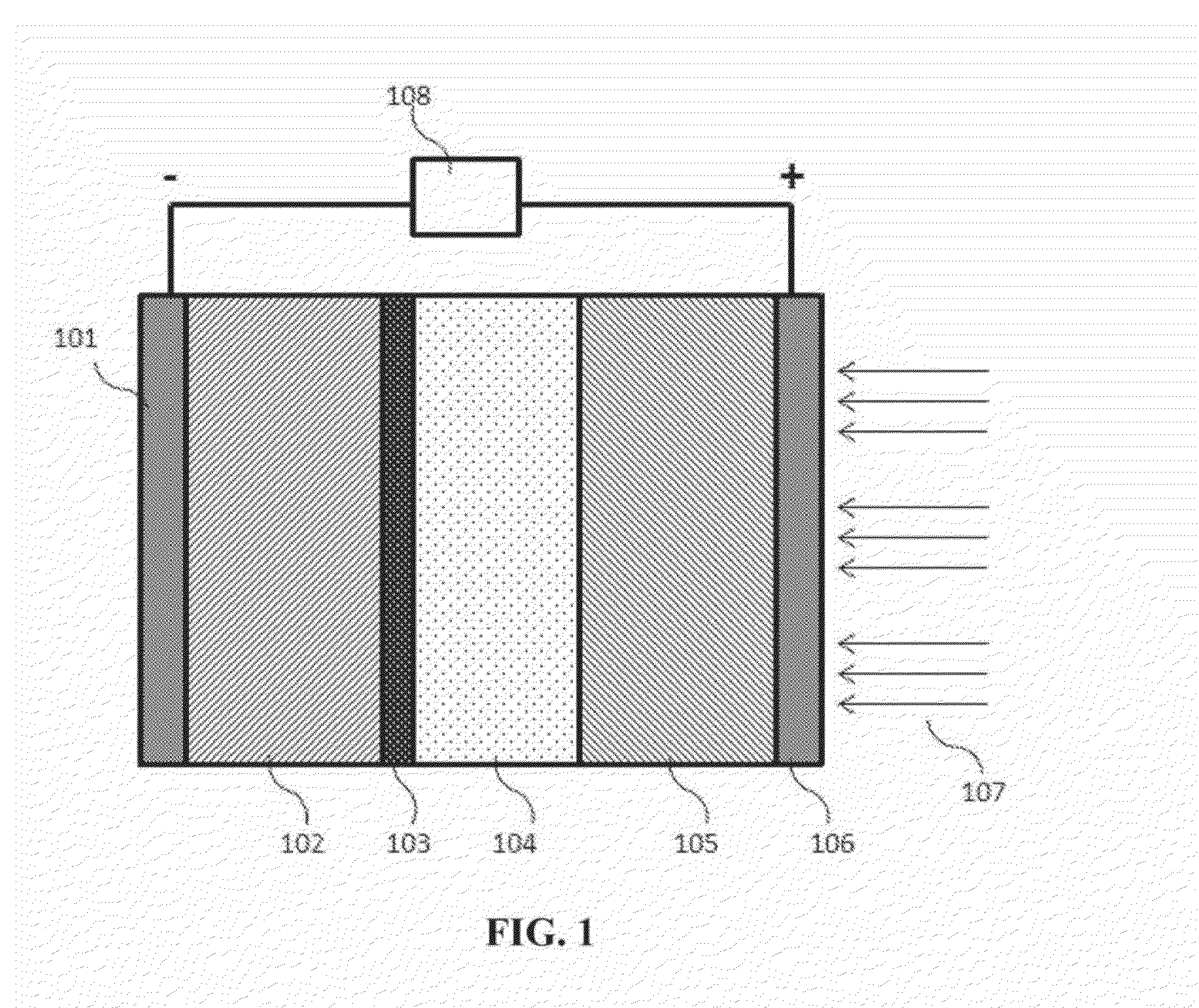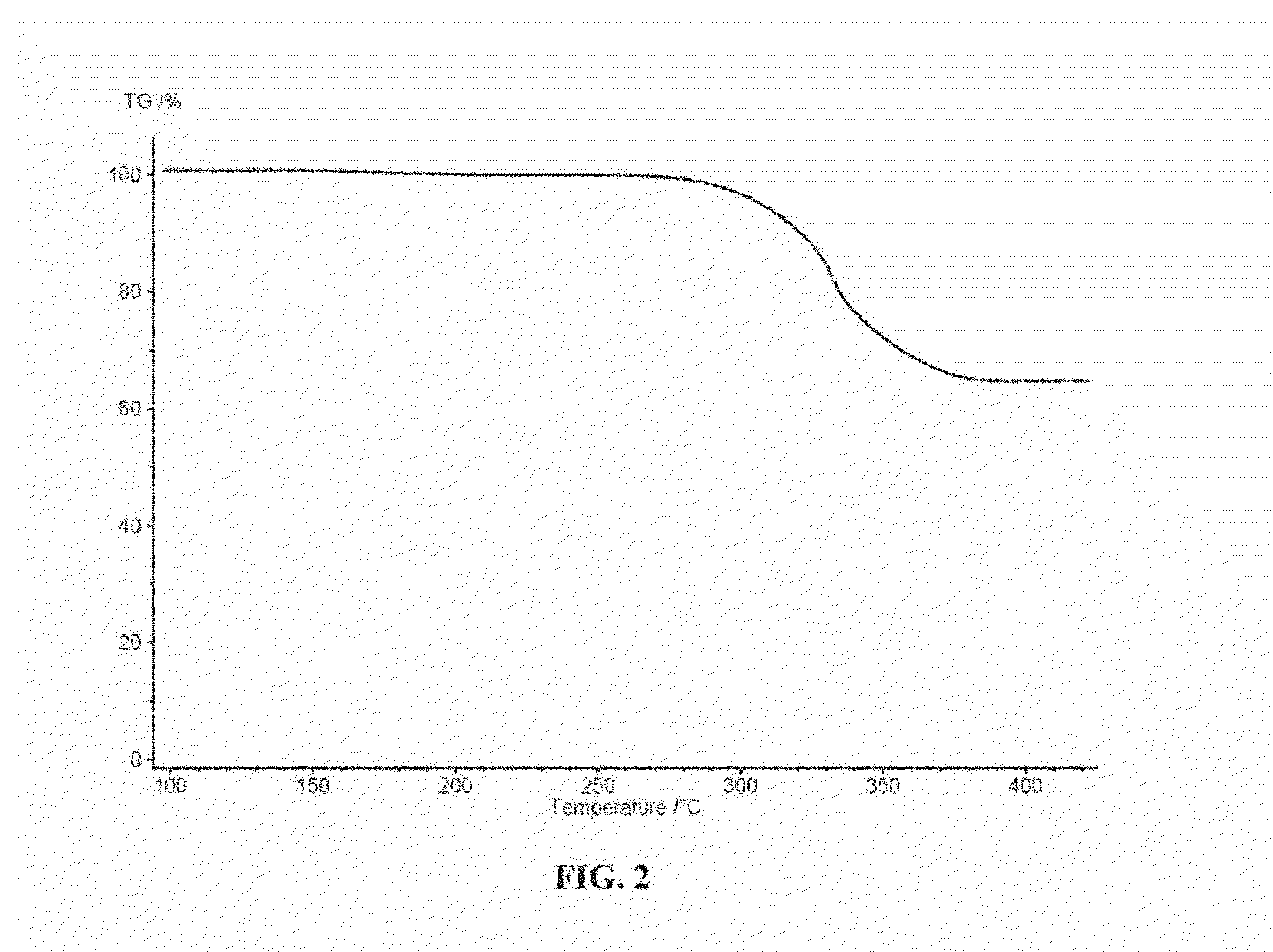Intermediate temperature alkali metal/oxygen batteries employing molten nitrate electrolytes
a technology of molten nitrate and alkali metal, which is applied in the direction of fuel and primary cells, electrochemical generators, cell components, etc., can solve the problems of low cycle life, rapid irreversible loss of active materials, and inability to recharge li/o/sub>batteries of the prior art to exhibit practical performance levels,
- Summary
- Abstract
- Description
- Claims
- Application Information
AI Technical Summary
Benefits of technology
Problems solved by technology
Method used
Image
Examples
example 1
[0034]Inertness of electrolyte: In this example (FIG. 2), thermogravimetric analysis is performed in order to ascertain reactivity between an electrolyte comprising molten alkali metal nitrates and Li2O2, which may be formed in the O2 positive electrode in accordance with the present invention. A sample was prepared consisting of a eutectic mixture of LiNO3 and KNO3in a ratio of 42:58 mole percent and having a melting point of 124 C. An amount of Li2O2 was added to the sample which was then heated to above 400° C. at a rate of 20° C. / minute. Thermal decomposition of Li2O2 occurs according to the reaction: Li2O2→Li2O+1 / 2O2. From this reaction a theoretical mass loss of 35 % is predicted. FIG. 2 depicts a plot of mass change vs. temperature for this experiment. Observation of a mass loss of 35% of the starting Li2O2 mass beginning at 300° C., approximately the expected temperature of Li2O2 thermal decomposition, provides evidence that no reaction occurred between Li2O2 and the electro...
example 2
[0035]High capacity and hw voltage hysteresis: In this example (FIG. 3), a Li / O2 cell employing a molten alkali metal nitrate electrolyte is cycled at intermediate temperature in accordance with the present invention. A cell was assembled consisting of a 1 cm diameter, 250 micron thick Li metal electrode, an O2 electrode formed from 5 mg Super P carbon:PTFE mix (90:10 weight percent carbon) dry pressed onto a stainless steel 316 mesh and approximately 150 μL of LiNO3—KNO3 eutectic electrolyte impregnated in a Whatman glass filter separator. The cell is cycled under O2 at a current density of 50 mA / g of carbon and at a temperature of 150° C. A high capacity of 1000 mAh / g of carbon is achieved on discharge with low polarization. Unlike prior art Li / O2 batteries, charging overpotential is extremely low (2O2 formed in the O2 electrode followed by diffusion to and reduction on the unprotected Li electrode is hypothesized to cause Coulombic loss.
example 3
[0036]Theoretically predicted O2 utilization: This example (FIG. 4) demonstrates the stability of the molten alkali metal nitrate electrolyte in Li / O2 cells in accordance with the present invention. A cell was assembled and cycled inside a hermetically sealed vessel filed with O2 according to the procedure of Example 2. In situ monitoring of pressure variation was performed during cycling. Two electrons per mole of O2 gas consumed is calculated from pressure and coulometry data, corresponding to the theoretically predicted value from reaction (2).
PUM
| Property | Measurement | Unit |
|---|---|---|
| temperature | aaaaa | aaaaa |
| partial pressure | aaaaa | aaaaa |
| temperature | aaaaa | aaaaa |
Abstract
Description
Claims
Application Information
 Login to View More
Login to View More - R&D
- Intellectual Property
- Life Sciences
- Materials
- Tech Scout
- Unparalleled Data Quality
- Higher Quality Content
- 60% Fewer Hallucinations
Browse by: Latest US Patents, China's latest patents, Technical Efficacy Thesaurus, Application Domain, Technology Topic, Popular Technical Reports.
© 2025 PatSnap. All rights reserved.Legal|Privacy policy|Modern Slavery Act Transparency Statement|Sitemap|About US| Contact US: help@patsnap.com



